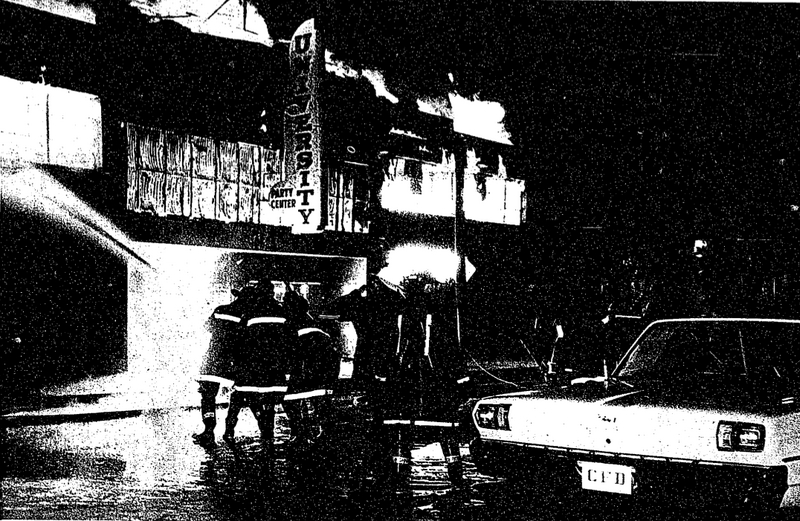Pla-Mor Roller Rink

For a generation in the 1940s-60s, Pla-Mor Roller Rink provided a much-needed recreational venue for all ages on the eastern end of the Cedar-Central (Fairfax) neighborhood and for a time was the only Black-owned skating rink in Cleveland. More than a place to skate, it also attracted top-billed musical acts.
On land now owned by Case Western Reserve University, Pla-Mor's location on Cedar Avenue at East 107th Street was a converted bus garage named the Coliseum, which opened in 1940. Built by the same syndicate that operated the Arena on Euclid Avenue, this multipurpose venue was intended for conventions, concerts, boxing shows, basketball games, and rollerskating. In 1942, Elmer "Al" Collins took over the "dark cavern," painted its interior, and opened the well-lighted Pla-Mor Roller Rink. He hired a full-time skating instructor and an organist to provide music for skaters. Not only did Collins enable many youths to compete in the National Roller Rink Operators Association that he founded, he also intervened in the fight against juvenile delinquency in Cedar-Central. In 1948 he even persuaded a "roving gang" that harassed the neighborhood to reconstitute as the Royal Dutchmen, a supervised social and athletic club that pledged to model constructive play for younger adolescents.
Pla-Mor hosted an array of events. Following World War II, the Negro Business Alliance of Cleveland sponsored the "Exhibit of Progress" several years in a row at the facility, drawing as many as 70,000 people to view displays and demonstrations of successful black enterprises, and in the latter half of the 1950s the Call & Post newspaper held its annual Home and Food Show there. The Future Outlook League, a civil rights organization founded in the 1930s, along with Black social organizations such as Coronet, the Ghana Club, and Les Charmantes, held lavish cabaret parties at Pla-Mor in the 1950s. Along with exhibitions and parties, the Pla-Mor ballroom attracted big-name music acts in the 1950s-60s, including Wynonie Harris, Dinah Washington, Frankie Lymon, the Marvelettes, and even B. B. King. In the late 1950s, DJs like WJMO's Ken Hawkins also spun records for dance nights.
But the Pla-Mor was best known for skating, which ranged from children's lessons to teen nights to skating shows such as those by the Roller Vanities. Racial discrimination contributed to Pla-Mor's popularity in the Black community. Although forbidden by law, segregation was common in Cleveland at mid century. From time to time, Blacks reported difficulties at Skateland, another popular roller rink at Euclid Avenue and East 90th Street. These problems seem to have escalated in the 1950s, when the adjacent Hough neighborhood transformed from 4 to 74 percent African American in only a decade. As late as 1955, after an interracial group of youth from Boys Town, Nebraska, went to Pla-Mor after exclusion from an undisclosed East Side rink, a spokesman at Skateland denied knowledge of the incident but openly admitted that the rink tried to deny African American entry except to private parties held by church or school groups. Although Skateland more openly hosted black events by the late 1950s, the Pla-Mor remained essential in the Black community.
In 1965 the Pla-Mor underwent renovation, and took the new name University Party Center. Count Basie's orchestra belted out jazz tunes at the Go-Go Girls Big Cabaret Party in June of the following year. It turned out to be the last of the storied shows at the place many still called the Pla-Mor. Just over a month later, the Hough Uprising broke out on Cleveland's East Side. The University Party Center went up in flames and, according to the Call & Post, was reduced to "twisted lengths of burned steel." Amid the chaos, the Townes family, who lived across the street, attempted to flee the danger in their 1957 Ford. When they drove through a nearby National Guard roadblock, police fired into their windshield, striking 16-year-old Diana Townes, who lost an eye. Four months later, the family's home also burned to the ground.
Today the mention of the Pla-Mor evokes bittersweet remembrances--both happy recollections of good times spent skating or dancing and sorrow for the roller rink's tragic end. Fondness for the good times led a handful of investors to reopen the former Euclid Rollerdrome as the new Pla-Mor in 2009 at 22466 Shore Center Drive in suburban Euclid, promising to keep the memory of its namesake alive.
Audio
Images





